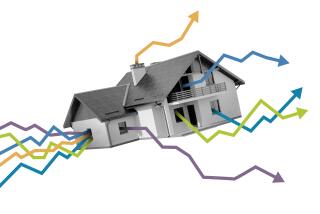County’s Apartment-Vacancy Rate Moves Up, Keeping Rent Hikes Down : REAL ESTATE
- Share via
Vacancy rates in Orange County apartments increased slightly during the second half of 1987, according to a recent survey, and that kept rents from rising much.
But county rents--like housing prices--remain far above the national average: For an unfurnished apartment in Orange County, the average monthly rent was $585 last year. The national average was $450.
The figures are from researchers at Cal State Sacramento, who surveyed apartment owners for the Apartment Assn. of Orange County, a landlords’ group. Owners of 444 local rental projects totaling 9,900 units responded.
Since the last recession ended in 1982, the county’s apartment owners have operated with an enviable 2% vacancy rate, according to William H. Kraus, an official of the apartment association. That means they were able to raise rents because demand for housing was so high.
But Congress ended many of the tax incentives for building apartments at the end of 1986, prompting many developers to take out building permits for apartments that year before the tax advantages vanished.
Many of those apartments were finished and came on the market in 1987, pushing the countywide vacancy rate up to 3.4% in the spring and to 3.6% by late in the year, and making the market, in real estate parlance, “soft.”
The wave of apartment construction has subsided this year, Kraus said, and the vacancy rate should drop slightly while rents go up.
While many of last year’s apartment complexes were built on “infill” sites in the heavily developed cities of northern Orange County, most of the building this year will be in the less-developed southern part of the county, Kraus said.
And rents will stay expensive as the land supply shrinks, costs move higher and the vacancy rate remains tight.
“Before you even turn a shovel of dirt on a project, you have to charge $350 a month rent” because of the cost of land, government permits and fees, Kraus pointed out.
More to Read
Inside the business of entertainment
The Wide Shot brings you news, analysis and insights on everything from streaming wars to production — and what it all means for the future.
You may occasionally receive promotional content from the Los Angeles Times.








